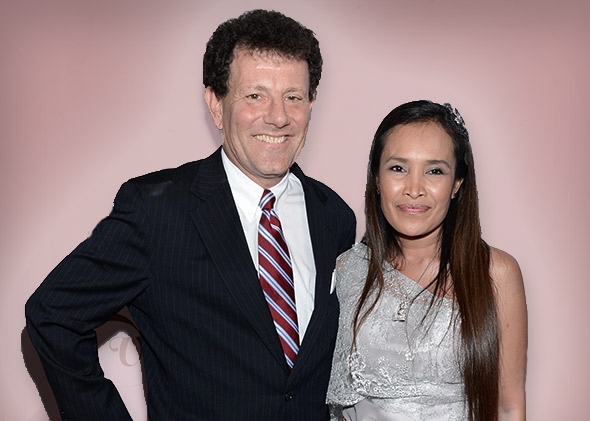The Creative Team Behind Some Like It Hot Musical
Musicals are a magical melange of melody, movement, and narrative, and the genesis of such a production is, quite frankly, a whirlwind of creativity and coordination. Take, for instance, the delightful adaptation of „Some Like It Hot.“ Bringing this beloved story to the musical stage was no trivial task. From the initial spark of inspiration to the final triumphant curtain call, every step of the journey is a dance of its own.
It all begins with the visionaries behind the scenes—those brilliant writers and composers who breathe life into the script and score. They take a simple story and turn it into a symphonic spectacle that captivates audiences and critics alike. You might be surprised to learn that many musical masterpieces often start as a solitary idea, a solitary tune, or even a solitary line of dialogue.
Key Creative Figures: Writers and Composers
The writers and composers are, quite literally, the beating heart of any musical. They’re the maestros who craft the compelling characters, the tantalizing tunes, and the riveting rhythms that get stuck in our heads and hearts. For „Some Like It Hot,“ the creative team had to strike a balance between staying true to the original story and infusing it with new, exhilarating elements. This isn’t just a walk in the park; it’s more like a tightrope walk—high stakes, high reward.
With a story originally set in the roaring ’20s, the language and music had to echo the exuberance of the era while also feeling fresh and relevant for modern audiences. The composers had their work cut out for them, creating a soundtrack that could span both decades and demographics seamlessly. It’s a high-wire act, but when done right, the results are nothing short of electrifying. The creative minds behind https://www.mybroadwaytickets.com/some-like-it-hot-tickets/ certainly knew how to strike all the right chords—pun intended.
The writers, meanwhile, had the Herculean task of adapting a beloved film into a format that not only honors the original but also thrives on stage. They had to pepper in humor, heart, and perhaps a few surprises for good measure. The dialogue had to be snappy, the jokes punchy, and the emotional beats, well, beatific. It’s akin to a chef crafting a gourmet meal from scratch, each ingredient meticulously measured and mixed to perfection.
Casting Choices and Their Impact
Once the script and score are in place, the next crucial step is assembling the cast. This is no mere game of musical chairs; it’s a meticulous process that can make or break a production. The right actor can add layers of depth and nuance to a character, while a miscast role can leave the audience feeling disenchanted.
For „Some Like It Hot,“ the casting choices were pivotal. The lead roles require not just acting prowess but also impeccable comedic timing and vocal virtuosity. Imagine trying to find a needle in a haystack, but if the needle could also sing and dance like a Broadway star. The performers had to be versatile, vivacious, and virtuoso, capable of capturing the essence of the original characters while adding their unique flair.
Moreover, casting in a musical is like assembling a jigsaw puzzle. Each actor must fit perfectly into the ensemble, creating a cohesive and captivating picture. The chemistry between cast members can elevate a production from good to great, from entertaining to enchanting. It’s the difference between a solo performance and a symphony.
So, when you see a musical like „Some Like It Hot,“ remember that every laugh, every tear, every standing ovation is the result of countless hours of casting, rehearsing, and perfecting. And trust me, that’s no small feat.
Casting Choices and Their Impact
In the world of musical theater, casting is not merely about finding actors who fit the roles; it’s about selecting individuals who can bring characters to life in a way that resonates with the audience. The casting choices in The Genesis of the Musical had a profound impact on its overall success and reception.
One of the key considerations during casting was the ability of the actors to embody the roles both vocally and emotionally. The lead roles were meticulously cast, ensuring that the actors not only had the vocal range required but also the emotional depth to convey the complex narratives. The lead actor, whose powerful performance became the heart of the musical, brought a raw and authentic energy to the role, earning critical acclaim.
The supporting cast also played a pivotal role in the musical’s success. Each member was selected for their unique ability to complement and enhance the lead performances. The chemistry between the cast members was evident, creating a dynamic and compelling stage presence. This synergy was crucial in engaging the audience and making the narrative believable and moving.
Moreover, the decision to cast actors with diverse backgrounds added a layer of authenticity and relevance to the production. It reflected the real-world diversity and enriched the storytelling, making it more relatable to a broader audience. This inclusivity also garnered positive attention from critics and audiences alike, setting a benchmark for future productions.
The Set and Costume Design
The set and costume design in The Genesis of the Musical were instrumental in creating an immersive experience for the audience. The design team worked tirelessly to ensure that every detail contributed to the storytelling, bringing the world of the musical to life.
The set design was a blend of intricate details and innovative technology. It featured a rotating stage that allowed for seamless scene transitions, creating a fluidity that kept the audience engaged. The use of projections and digital backdrops added depth and dimension, transforming the stage into various locations effortlessly. The attention to detail in the set pieces, from the grandiose backdrops to the smallest props, added layers of authenticity to the production.
Costume design was equally paramount in establishing the musical’s aesthetic and period authenticity. The costumes were carefully crafted to reflect the characters’ personalities, social statuses, and the time period of the narrative. Each costume was a visual representation of the character’s journey, evolving with the storyline. The intricate designs and meticulous attention to detail in the fabrics, colors, and accessories contributed to the visual spectacle of the musical.
Furthermore, the collaboration between the set and costume designers ensured a cohesive visual narrative. The color palettes and design motifs were harmoniously integrated, providing a consistent aesthetic that enhanced the overall production quality. This visual cohesion was crucial in immersing the audience in the world of the musical, making every scene a feast for the eyes.
In conclusion, the set and costume design were not just background elements but were central to the storytelling in The Genesis of the Musical. They played a vital role in creating the magical and immersive experience that captivated audiences and brought the narrative to life.
The Genesis of the Musical
The journey of a musical from concept to stage is a fascinating one, often starting with a spark of inspiration and evolving through numerous stages of development. The genesis of a musical typically begins with an idea, which could be based on a book, a historical event, or even a simple storyline envisioned by the creators. This idea is then fleshed out into a script or a book, detailing the plot, characters, and dialogue. Concurrently, composers and lyricists work on creating songs that fit seamlessly into the narrative, enhancing the emotional and thematic depth of the story.
Key Creative Figures: Writers and Composers
At the heart of any successful musical are its writers and composers. The writers, often referred to as the book writers, craft the script that forms the backbone of the production. They create the dialogue, define the characters, and shape the narrative arc. Composers and lyricists, on the other hand, are responsible for the music and lyrics. Their collaboration results in songs that are not only memorable but also integral to storytelling. Famous duos like Rodgers and Hammerstein or modern-day legends like Lin-Manuel Miranda exemplify the synergy required between writers and composers to create a masterpiece.
Casting Choices and Their Impact
The casting choices in a musical can significantly influence its success. Casting directors are tasked with finding actors who not only fit the roles physically and vocally but also bring a unique interpretation to the characters. A well-chosen cast can elevate a production through their performances, adding depth and authenticity to the roles they portray. For instance, the groundbreaking casting of „Hamilton“ with racially diverse actors in historically white roles brought a fresh perspective and garnered widespread acclaim. Casting can also impact a musical’s draw at the box office, with star actors often attracting more audience members.
The Set and Costume Design
The visual elements of a musical, including set and costume design, play crucial roles in creating an immersive experience for the audience. The set design establishes the world in which the story unfolds, ranging from realistic settings to abstract representations. It involves careful consideration of space, props, and backdrops to enhance the narrative. Costume design, on the other hand, helps define characters’ personalities, social statuses, and transformations throughout the production. Designers often work closely with directors to ensure that every visual element aligns with the overall vision, contributing to the storytelling in a cohesive and compelling manner.
Critical Reception and Awards
The reception of a musical by critics and audiences can make or break its longevity and success. Critical reviews often focus on various aspects such as the storyline, performances, music, and overall production quality. Positive reviews can boost ticket sales and attract a broader audience, while negative reviews may hinder a musical’s popularity. Awards, such as the Tony Awards or the Laurence Olivier Awards, also play a significant role. Winning prestigious awards can elevate a musical’s status, leading to extended runs, international tours, and even adaptations into other media forms, such as films or television series.
Conclusion
Creating a musical is a multifaceted endeavor that involves the collaboration of numerous creative talents, from writers and composers to actors and designers. Each element, from the initial idea to the final performance, plays a vital role in shaping the production’s success. The impact of casting choices, the intricacies of set and costume design, and the reception by critics and audiences all contribute to the legacy of a musical. Ultimately, when all these elements come together harmoniously, they create an unforgettable experience that resonates with audiences for years to come.




